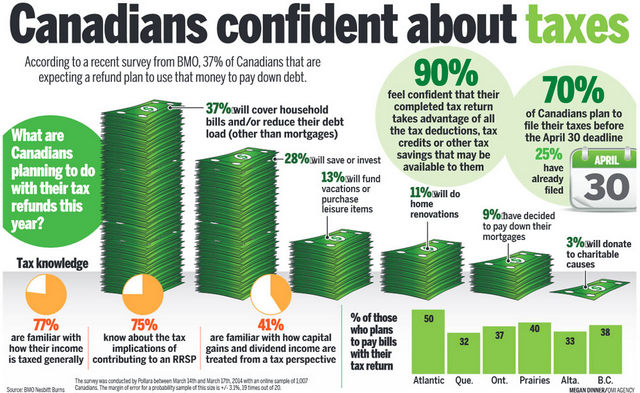To better explain the different types of fees associated with investing, let’s take a look at the costs to invest using an example. If a novice investor, like myself, was to take $1000 and invest it in the IA Clarington Focused Canadian Equity Class – Series A (CCM9900) mutual fund with RBC Direct Investing brokerage account, the fees would look something like this:
The Different Investing Fees
Account Fee
RBC Direct Investing charges $25/quarter for clients with under $15,000 invested with the brokerage; the account fee is waived for clients who have invested more than $15,000. Since the investor in our example only has $1000 invested, it would cost $25 every quarter to invest with RBC Direct Investing.
Transaction Fee
As of January 14, 2014, RBC Direct Investing charges a flat rate of $9.95/trade for transactions placed via their online investing website. There are no requirements for minimum account balances or trading activity. Clients who make a minimum of 150 trades/quarter are charged a reduced rate of $6.95/trade. Our investor would be charged a transaction fee of $9.95.
Front End Load or Initial Sales Charge (ISC)
It can costs up to 5% of the initial investment to buy mutual fund CCM9900. It would cost our investor $50 to make a $1000 investment; the $50 is deducted from the $1000, leaving $950 to purchase fund shares.
Back End Load or Deferred Sales Charge (DSC)
The back end load schedule for selling CCM9900 is as follows:
[table]Within Year #, Cost (% of Amount Invested)
1, 5.75%
2, 5.50%
3, 5.0%
4, 4.50%
5, 4.0%
6, 3.5%
7, 2.0%
After 7, 0%,[/table]
Our investor, who purchased $1000 in shares, would be charged $57.50 if the shares were sold within the first year of buying; $55.00 if the share are sold within the second year; and so forth.
Low Load (LL)
The low load schedule for selling CCM990 is as follows:
[table]Within Year #, Cost (% of Amount Invested)
1, 3%
2, 2.5%
3, 2.25%
After 3, 0%[/table]
Our investor would be charged $30 if the shares were sold within the first year of buying; $25 if the shares were sold in the second year; and so forth.
Management Expense Ratio (MER)
CCM9900 carries a MER of 3.26% per year. Our investor would be subject to a $32.60 MER fee each year for the $1000 invested.
Trading Expense Ratio (TER)
CCM9900 charges a TER of 0.49%. Our investor would be subject to a $4.90 TER fee each year for the $1000 invested.
The Cost of Investing $1000 After One Year
Now, let’s take a look at a summary of all the fees our investor has paid after a year of investing $1000 into IA Clarington Focused Canadian Equity Class – Series A with RBC Direct Investing. Note, the investor choose to pay the front end load fee. Thus, $50 would be deducted from the total amount being invested and potential gains or losses would be based on $950 invested into the fund. The fees are as follows:
[table]
Fee, Cost
Account Fee ($25/quarter), $100
Transaction Fee to Buy, $9.95
Front End Load (%5 of $1000), $50.00
Management Expense Ration ($950 x 3.26%), $30.97
Trading Expense Ratio ($950 x 0.49%), $4.65
Total, $195.57[/table]
The Last Word
The many different types of investment fees can play a significant role in decreasing investment returns. Suffice it to say, CCM9900 probably isn’t the best option for a beginner looking to start investing. The high fees associated with the mutual fund consume 20% of the initial $1000 investment and leave the investor at a disadvantage. If market performance of all funds was assumed to be equal, it would then makes sense to invest in a mutual fund with the lowest fees in order to maximize investment returns.





[…] Teo @ Urban Departures writes Calculating the Different Types of Investing Fees – To better explain the different types of fees associated with investing, let’s see […]